Research Article Open Access
Clinical Efficacy of Dermocosmetic Formulations Containing Spirulina Extract on Young and Mature Skin: Effects on the Skin Hydrolipidic Barrier and Structural Properties
| Delsin SD, Mercurio DG, Fossa MM and Maia Campos PMBG* | |
| Faculty of Pharmaceutical Sciences of Ribeirao Preto, University of Sao Paulo, Av. do Café S/N, Monte Alegre, 14040-903, Ribeirão Preto, SP, Brazil | |
| Corresponding Author : | Patricia Maia Campos MBG PhD, Faculty of Pharmaceutical Sciences of Ribeirao Preto University of Sao Paulo, Av. do Café S/N, Monte Alegre 14040-903, Ribeirão Preto, SP, Brazil Tel: +5516 33154197 E-mail: pmcampos@usp.br |
| Received: August 31, 2015; Accepted: September 14, 2015; Published: September 21, 2015 | |
| Citation: Delsin SD, Mercurio DG, Fossa MM, Maia Campos PMBG (2015) Clinical Efficacy of Dermocosmetic Formulations Containing Spirulina Extract on Young and Mature Skin: Effects on the Skin Hydrolipidic Barrier and Structural Properties. Clin Pharmacol Biopharm 4:144. doi:10.4172/2167-065X.1000144 | |
| Copyright: © 2015 Delsin SD, et al. This is an open-access article distributed under the terms of the Creative Commons Attribution License, which permits unrestricted use, distribution, and reproduction in any medium, provided the original author and source are credited. | |
Visit for more related articles at Clinical Pharmacology & Biopharmaceutics
Abstract
Introduction: Spirulina is a unicellular blue-green alga rich in vitamins, minerals, pigments, proteins, polysaccharides, which indicates a high potential use in anti-aging cosmetic products as well as for skin protection. Preliminary studies showed antioxidant potential, immediate benefits on the skin microrelief and hydration and skin compatibility of formulations containing Spirulina extract. Thus, the objective of this study is to evaluate the long term clinical efficacy of dermocosmetic formulations containing Spirulina extract on young and mature skin using biophysical and skin imaging techniques.
Methods: 40 healthy female volunteers participated in the clinical efficacy study, aged between 18- 39 (Young group) and 40- 65 (Mature group). The gel-cream formulation, supplemented, or not (vehicle - FGV) with 0.1% (w/w) of Spirulina extract (FGA) was applied twice daily on the volunteers face region. The effects were evaluated in terms of skin hydration, transepidermal water loss - TEWL, skin microrelief, sebum content and morphological and structural epidermal features before and after a 28-day-period of application of the formulations.
Results: The formulation containing Spirulina extract increased stratum corneum water content and reduced the TEWL in both groups. However, a significant reduction in the older group, that received the formulation with Spirulina extract, was observed when compared to the younger group and to the vehicle formulation. Only the formulation containing the active ingredient under study reduced significantly the sebum content on the volunteer’s skin. It was also noted an improvement of the skin microrelief by the reduction of the surface roughness and after the treatment the keratinocytes were more uniformly distributed and homogeneous.
Conclusion: The formulation containing Spirulina extract improved skin conditions and provided long term skin benefits such as hydration, protection of the skin barrier function and oil control. Finally, Spirulina extract stands out as a unique active ingredient for effective multifunctional dermocosmetic formulations for the care of young and mature skin.
| Keywords |
| Clinical efficacy; Dermocosmetic formulations; Skin protection; Spirulina; Young and mature skin |
| Introduction |
| The quest for prevention and treatment of skin changes due to aging process has motivated the development of innovative cosmetic products, leading to an intense search for new cosmetic products for the protection and improvement of skin conditions, providing unique benefits to the skin. Spirulina is an unicellular blue-green alga rich in vitamins, minerals, pigments, proteins, polysaccharides fatty acids, amino acids such as methionine, glycine, lysine and gammalinolenico acid (GLA) and in polysaccharides and pigments, including β-carotene, i.e. the pro-vitamin A, and vitamin B complex that has a high potential use in dermocosmetic products for the treatment and prevention of changes from the aging process and for skin protection [1-4]. |
| Furthermore, preliminary studies performed by our research group [5] showed antioxidant potential, skin compatibility and immediate effects on the skin microrelief and hydration with formulations containing Spirulina extract obtained by biotechnological process. In addition, their stability had already been confirmed by physical stability tests in preliminary studies by the determination the rheological behaviour. |
| To prove those effects, it is necessary to conduct clinical efficacy studies with advanced biophysical and skin imaging techniques, which involves equipments with different physical and physicochemical principles and that enables the assessment of product’s efficacy under real conditions of use [6-8]. |
| Among the non-invasive methods, we highlight the equipments that evaluate different skin parameters of great importance in cosmetics clinical efficacy studies: Corneometer CM 825® (stratum corneum water content), Tewameter TM 210® (transepidermal water loss), Cutometer® (skin viscoelastic properties), Visioscan VC 98® (skin microrelief), and Sebumeter® (sebum content). |
| The 20 MHz Ultrasound Dermascan® C has also been used to determine the dermis thickness and to analyze hypoechogenic bands, which has been correlated with photoaging. The Reflectance Confocal Microscope Vivascope® 1500 may also assist in the evaluation of epidermis thickness, allowing imaging analysis of the epidermis and papillary dermis at the cellular level [9-12]. |
| Finally, the use of Spirulina extract in dermocosmetic formulations enables the development of a formulation with multifunctional features: more stable, safe, with fewer active substances and lower cost. However, long term studies are necessary to prove its anti-aging properties on the skin. Thus, the objective of this study was to evaluate the long term clinical efficacy of formulations containing Spirulina extract using biophysical and skin imaging techniques. |
| Materials and Methods |
| Spirulina extract - composition |
| The studied Spirulina extract contains between 50 and 70% of its dry weight in proteins. The amino acids composition includes methionine, glycine, lysine and gammalinolenico acid. Spirulina extract has between 8 and 14% polysaccharides of which the main monomers are glucose, galactose, mannose and ribose and about 6% of lipids. The extract has high concentrations of pigments, among them β-Carotene (pro-vitamin A) and vitamin B. |
| Formulations studied |
| The formulations were prepared in a Heidolph stirrer, ZRP and 2021, utilizing fatty alcohols, ammonium acryloyldimethyltaurate, NP copolymer and methylphenyl polysiloxane, preservatives, phenoxyethanol and parabens, BHT and distilled and deionized water. These gel-cream formulations were supplemented (FGA) or not (vehicle – FGV) with dry extract of Spirulina – 0.1% (w/w) [5]. |
| Characterization of the skin and evaluation of clinical efficacy - Studied panel |
| After the approval of the ethical committee (CEP/FCFRP nº 315), 40 healthy female volunteers, with phototypes II,III or IV aged between 18 - 65 years old were recruited. The volunteers were divided into 2 groups according to their age. The first group of 20 volunteers was aged between 18 to 39 years old (young skin) and the second, between 40 to 65 years old (mature skin). In the clinical efficacy study, the gel-cream formulation added or not (vehicle - FGV) with 0.1% (w/w) of Spirulina extract (FGA) was applied by the volunteers twice daily on the face region. Both groups were divided into two other groups, being 10 using the formulation containing Spirulina extract and the other 10, using the vehicle formulation. Their measures were obtained before (baseline values) and after a 28-day-period of application of the formulations on the face. |
| Skin hydration |
| The stratum corneum water content was determined by a noninvasive, skin capacitance meter (Corneometer® CM 825, Courage + Khazaka, Cologne, Germany), which measures capacitance and is entirely dependent of the water content in the skin. Different capacitance changes are converted into a digital measured value (arbitrary units) which is proportional to the skin humidity. The results are given in arbitrary units (AU) that are estimated to correspond 1 AU in 0.2 to 0.9 mg of water per gram of stratum corneum [13]. |
| Transepidermal water loss |
| The transepidermal water loss -TEWL - (g/cm2;h) was evaluated by the Tewameter® TM 300 (Courage & Khazaka) based on the diffusion principle described by Adolf Fick. The values are given in g.m-2.h-1 [14]. |
| Sebum content |
| The determination of the sebum content of the skin was made using the Sebumeter® SM equipment, which is based on a direct measurement method of sebum, that is not influenced by moisture. Oil is collected on the translucent plastic tape cassette, that becomes transparent, and the result is obtained by measuring the transmittance value of the difference light through the tape before and after impregnation of the oil present on the skin. |
| The sebum content was evaluated on the forehead region of the volunteers face using the SM810 Sebumeter® equipment. For this analysis, a special opaque tape 64 mm2 was pressed on the face for 30 seconds with slight pressure to collect sebum [15,16]. |
| Skin microrelief |
| Skin microrelief parameters were evaluated using a VisioScan® VC98 (Courage and Khazaka Cologne, Germany) equipment, which is a special high resolution UV-A light video camera developed especially to study the skin surface directly, allowing qualitative and quantitative assessment of it under physiological conditions through a scanning image [17]. The images show skin structure and its level of dryness. The grey level distribution of the image is used to evaluate the following skin roughness parameters: skin roughness (Rt), skin smoothness (Sesm-proportional to width and form of the wrinkles) and number and width of the wrinkles (Sew). |
| Evaluation of the dermis thickness and echogenicity |
| The 20 MHz ultrasound Dermascan C®, (Cortex, Hadsund, Denmark) contains a transducer focus that is used for the attainment of two-dimensional transverse images, represented in the B-mode software. The ultrasonic wave (speed of 1,580 m/s) is partially reflected by the skin structure, giving rise to echoes of different amplitudes. To calculate the echogenicity, the number of pixels with low echogenicity is measured by means of the image analysis software and related to the total number of pixels [18]. The echogenicity ratio was calculated as a ratio of number of low echogenical pixels and number of total echogenical pixels (LEP/TEP). |
| Structural and morphological properties of the epidermis |
| In vivo reflectance confocal microscopy (RCM) is based on the imaging of the light reflected by the living tissue. The light source illuminates a small area of a three-dimensional sample, like the skin, and the illuminated region is then scanned into the detector through a small opening. The confocal images are registered in gray scale (0.5mm), where white represents the total reflected light and black is associated with a region without reflection. More light is reflected when the analyzed skin region contains structures with sizes similar to the wavelength of the light source systems as well as when the reflectance confocal microscopy is conducted using a laser as light source. The images are recorded in the presence of an endogenous contrast, which can be provided by microstructures, such as melanin, or cellular organelles, such as haemoglobin [10]. Three stacks were obtained in the periorbital region. The image acquisition was made in a 3 μm step until 150 μm. The stratum corneum thickness, viable epidermis thickness and epidermal homogeneity parameters were evaluated. |
| Results |
| After 28 days of application of the formulation containing Spirulina extract, a significant increase of the stratum corneum water content was observed in both groups. This effect was more pronounced on the mature skin group. In addition, a reduction of the transepidermal water loss was observed in both groups - young and mature skin - with the application of the formulations FGA (gel cream containing 0.1% of the active) (Figure 1A). However, these results were significant only in the older group (Figure 1B), when compared to the group that received the vehicle formulation. |
| Regarding the sebum content, only the formulation containing the active ingredient under study significantly reduced the amount of sebum on the skin (Figure 2). A control in the sebum production was observed with the application of FGA formulation, in both groups (Figure 2A, Figure 2B), which can be explained based on the rich constitution of the Spirulina extract. |
| The use of the formulations containing Spirulina extract over the 28 days improved the skin microrelief (Figure 3) by reducing the surface roughness (Ser parameter). |
| The Ultrasound imaging analysis did not show any significant differences in the dermis echogenicity after 28 days of application of the formulation containing Spirulina extract. Although a significant result with the use of the formulation containing the active ingredient was not obtained, it was observed a slight improvement in echogenicity of the dermis of young and mature skin of the volunteers (Figure 4 and Figure 5). |
| After 28 days of application of the formulations, the keratinocytes were more uniformly distributed and homogeneous, but it was not observed significant changes in epidermis thickness (Figure 6). |
| Discussion |
| One of the most notorious functions of the skin is that this tissue is capable of protecting the body against water loss and it prevents the entrance of foreign bodies, as microorganisms and viruses. It also selectively regulates the in and output of substances from the human body towards the environment and vice-versa. This is called “the skin barriers function” [19]. The main constitution from this barrier is the epidermis; this layer acts as a dynamic physical and biochemical frontier. The physical barrier consists of lipids and corneocytes of the stratum corneum. These components are arranged in a linked structure and, additionally, there is a thin acid film of lipids covering its surface. Moreover, in this film, it’s possible to find sebaceous gland lipids, corneocytes remains and sweat which together play the role of the biochemical barrier. This way, the stratum corneum hydration, transepidermal water loss and sebum level parameters contribute to the maintenance of skin barrier functionability [19]. |
| Therefore, it’s important to keep those parameters balanced, guaranteeing this way, the protection and the functionality of the skin barrier. Due to its features, the system can be stimulated and its functions can be improved by the use of several different formulations. |
| According to the obtained results, the use of the formulation containing the Spirulina extract, due to its rich composition in amino acids [20] and polysaccharides [21], could enhance the hydrolipidic mantle, regenerating the skin barrier, leading to a reduction of the transepidermal water loss. The ingredients obtained from biotechnological process have gained prominence due to its performance in dermocosmetic formulations, which can induce a TEWL reduction. Studies have shown its importance to protect the skin barrier function because polysaccharides can help improve skin conditions with its daily use, keeping the skin in good conditions [21,22]. |
| Skin oiliness is a major concern in young skin, and has great impact in skin balance and presents undesirable clinical signals such as skin shine and oily appearance [23]. The use of inappropriate formulations, many times, can result in undesirable increase of skin oiliness and disturb skin oil balance [23]. Thus, the use of formulations for oil control is important in both young and mature skin. |
| The sebum production is due to the stimulus made by androgens. The 5-α reductase enzyme is the enzyme responsible for the metabolism of testosterone in the skin, which is present in its most potent form, the dihydrotestosterone. There are two isotypes of 5-α reductase: the isoenzyme type 1 is most commonly found in the sebaceous glands while the isoenzyme type 2 is most commonly found in the prostate and hair follicle [24,25]. Thus, substances that have the ability to inhibit isoenzyme type 1 are very viable for use in cosmetic products for oil control [24]. It is known that some essential fatty acids have the ability to inhibit 5-α reductase enzyme, such as α and γ linolenic acid [26,27], which are constituents of blue-green algae under study. In this context, the efficacy in terms of sebum control can be related with the content of these natural fatty acids such as linoleic acid found in the Spirulina extract. This way, the use of the formulation containing the Spirulina, helped in regulation of sebum production, improving the oily skin appearance on the face of the volunteers. Moreover, other studies showed that the control of the oiliness favors the balance of the hydrolipidic mantle, an essential factor in the protection of skin barrier function and consequently for moisturizing skin. In addition, the reduction or exacerbated increase oiliness can also compromise the formation of the hydrolipidic mantle, bringing unbalance to the barrier function of the skin Considering that, the application of the formulation containing Spirulina extract can control the skin oiliness, mainly in mature skin, the control of the oiliness could corroborate with decreased TEWL and improvement of skin appearance [10]. |
| The use of the formulations containing Spirulina extract improved the skin microrelief by reducing the surface roughness. Changes in cutaneous microrelief parameters observed by using the FGA formulation are related to a moisturizing effect, since the hydration may provide an immediate improvement on skin appearance [10,28]. |
| Thus, the use of the formulation containing Spirulina extract improved skin microrelief in both groups (young and mature skin) due to the rich composition of the blue green alga in vitamins, minerals and proteins, allowing the formulation FGA to contribute to the increase skin hydration of the volunteers. |
| The high-frequency ultrasound allows assessment of parameters related to skin structure, enabling the analysis of the skin aging process and the echogenicity of the dermis, which varies with the intrinsic (chronological age) and extrinsic (exposure to sunlight) aging processes. It is also possible to quantify and qualify the collagen and elastin fibers and other parameters, contributing to the efficacy of the dermocosmetic formulations analysis. During the aging process, the collagen fibers suffer modifications in its structural organization, there’s a decrease in the synthesis of the collagen, and with that, elastic fibers tend to become deformed and less flexible. This decrease of collagen in epithelial tissue is a result of the decreased fibroblasts metabolic activity, which are responsible for its synthesis. The structural support of the dermis tends to be lost during the aging process so, the skin becomes less elastic, thinner and this way, less able to resist to mechanical changes [29,30]. |
| In this study, significant differences were not observed in the dermis echogenicity. Although it wasn’t obtained a significant result with the use of the formulation containing the active ingredient, it was possible to observe a slight improvement of the dermis echogenicity in both young and mature skin groups. |
| Reflectance Confocal Laser Microscopy has been proposed to assess the efficacy of anti-aging formulation studied through the evaluation of the epidermal layers. It should be noted that few studies have used this innovative technology to evaluate the dermocosmetic clinical efficacy. |
| The epidermis is a dynamic tissue in a constant cell renewal process, in which the loss of cells from the surface of the stratum corneum is balanced by growing cells in the lower layers of this tissue [31]. After the treatment, the keratinocytes were more uniformly distributed and homogeneous. This effect could be linked to the moisturizing effect of the Spirulina extract, showing that this multifunctional formulation provided an increase of water content in stratum corneum and a reduction of transepidermal water loss in the deeper layers of the epidermis [32,33]. |
| One possible mechanism for the effects of Spirulina extract observed during the clinical study is that this extract could act on cell renewal process [21]. The basal layer, received stimulus for cell division and thus, a migration of these cells for the surface, replacing those that peeled off, contributing to the processes of keratinization or renewal of the stratum corneum. Therefore, the layer above (spinous layer) was encouraged to start the keratinization process, initiating the formation of lamellar bodies that are responsible for the formation of the hydrolipidic mantle, allowing increased protection against transepidermal water loss [34]. |
| This study applied innovative techniques that evaluate different parameters of the skin, improving our understanding about the skin biology and aging process and enhancing the elucidation of the effects of dermocosmetic formulations in the actual conditions of use, in a non invasive way. The valuable results provided by the advanced equipments used in this study allowed the scientific clarification of the effects of Spirulina extract on the epidermis and showed comprehensive results in terms of the mechanism of action of this active substance on the skin homeostasis. |
| In summary, Spirulina extract is presented as a differentiated active ingredient to be applied in dermocosmetic formulations for the improvement of the epidermis structure and maintenance of skin hydrolipidic film balance, providing unique skin benefits with the balance of moisture and skin lipid content mainly on mature skin. |
| Conclusion |
| Spirulina extract is an innovative ingredient obtained from biotechnological process to be applied in multifunctional dermocosmetic formulations for hydration, skin barrier function and oil control with protective and anti-aging benefits. Finally, Spirulina extract stands out as a unique ingredient for achieving effective multifunctional dermocosmetic formulations for the care of young and mature skin. |
| Acknowledgements |
| The authors gratefully acknowledge the financial support of Conselho Nacional de Desenvolvimento Científico e Tecnológico (CNPq) and Fapesp, São Paulo - Brazil. |
| Conflict of Interest |
| Stefânia Duz Delsin, Daiane Garcia Mercúrio, Marina Mendes Fossa and Patrícia M.B.G. Maia Campos declare that they have no conflict of interest. |
References
- Stolz P, Obermayer B (2005) Manufacturing Microalgae for Skin Care. Cosm Toil 120:99-106.
- Pulz O, Gross W (2004) Valuable products from biotechnology of microalgae. See comment in PubMed Commons below ApplMicrobiol Biotechnol 65: 635-648.
- Singh S, Kate BN, Banerjee UC (2005) Bioactive compounds from cyanobacteria and microalgae: an overview. See comment in PubMed Commons below Crit Rev Biotechnol 25: 73-95.
- Becker EW1 (2007) Micro-algae as a source of protein. See comment in PubMed Commons below Biotechnol Adv 25: 207-210.
- Maia Campos PMBG, Camargo Jr FB, Corauce D (2013) Spirulina containing cosmetic composition and cosmetic treatment method. European Patent Office Netherlands patent EP 12768486.8-1458.
- Leonardi GR, Gaspar LR, Maia Campos PMBG (2002) Application of a non-invasive method to study the moisturizing effect of formulations containing vitamins A or E or ceramide on human skin. J CosmetSci53:263-268.
- Campos PM,Gonçalves GM, Gaspar LR (2008) In vitro antioxidant activity and in vivo efficacy of topical formulations containing vitamin C and its derivatives studied by non-invasive methods. See comment in PubMed Commons below Skin Res Technol 14: 376-380.
- Egawa M,Oguri M, Kuwahara T, Takahashi M (2002) Effect of exposure of human skin to a dry environment. See comment in PubMed Commons below Skin Res Technol 8: 212-218.
- Li YH, Chen JZ, Wei HC, Wu Y, Liu M, et al. (2008) Efficacy and safety of intense pulsed light in treatment of melasma in Chinese patients. See comment in PubMed Commons below DermatolSurg 34: 693-700.
- Mercurio DG, Segura JH, Demets MB, Maia Campos PM (2013) Clinical scoring and instrumental analysis to evaluate skin types. See comment in PubMed Commons below ClinExpDermatol 38: 302-308.
- Maia Campos PM,Gianeti MD, Camargo FB Jr, Gaspar LR (2012) Application of tetra-isopalmitoyl ascorbic acid in cosmetic formulations: stability studies and in vivo efficacy. See comment in PubMed Commons below Eur J Pharm Biopharm 82: 580-586.
- Jasaitiene D,Valiukeviciene S, Linkeviciute G, Raisutis R, Jasiuniene E, et al. (2011) Principles of high-frequency ultrasonography for investigation of skin pathology. See comment in PubMed Commons below J EurAcadDermatolVenereol 25: 375-382.
- Dal'Belo SE, Gaspar LR, Maia Campos PM (2006) Moisturizing effect of cosmetic formulations containing Aloe vera extract in different concentrations assessed by skin bioengineering techniques. See comment in PubMed Commons below Skin Res Technol 12: 241-246.
- Gioia F,Celleno L (2002) The dynamics of transepidermal water loss (TEWL) from hydrated skin. See comment in PubMed Commons below Skin Res Technol 8: 178-186.
- Dobrev H (2007) Clinical and instrumental study of the efficacy of a new sebum control cream. See comment in PubMed Commons below J CosmetDermatol 6: 113-118.
- Cheng Y, Dong Y, Wang J, Dong M, Zou Y, et al. (2009) Moisturizing and anti-sebum secretion effects of cosmetic application on human facial skin. See comment in PubMed Commons below J CosmetSci 60: 7-14.
- Levy JL,Trelles M, Servant JJ, Agopian L (2004) Non-ablative skin remodeling: an 8-month clinical and 3D in vivo profilometric study with an 810 nm diode laser. See comment in PubMed Commons below J Cosmet Laser Ther 6: 11-15.
- Jemec GB,Gniadecka M, Ulrich J (2000) Ultrasound in dermatology. Part I. High frequency ultrasound. See comment in PubMed Commons below Eur J Dermatol 10: 492-497.
- Luebberding S, Krueger N, Kerscher M (2013) Age-related changes in skin barrier function - quantitative evaluation of 150 female subjects. See comment in PubMed Commons below Int J CosmetSci 35: 183-190.
- Verdier-Sévrain S,Bonté F (2007) Skin hydration: a review on its molecular mechanisms. See comment in PubMed Commons below J CosmetDermatol 6: 75-82.
- Camargo Junior FB, Gaspar LR, Maia Campos PMBG (2012) Immediate and long-term effects of polysaccharides-based formulations on human skin. Braz J Pharm Sci48:547-555.
- Maia Campos PMBG, Melo MO, Camargo Junior FB (2014) Effects of Polysaccharide-Based Formulations on Human Skin. Polysaccharides 1-18.
- Kligman AM, Mills OH Jr (1972) "Acne cosmetica". See comment in PubMed Commons below Arch Dermatol 106: 843-850.
- Mercurio MG,Gogstetter DS (2000) Androgen physiology and the cutaneous pilosebaceous unit. See comment in PubMed Commons below J GendSpecif Med 3: 59-64.
- Chen W,Zouboulis CC, Orfanos CE (1996) The 5 alpha-reductase system and its inhibitors. Recent development and its perspective in treating androgen-dependent skin disorders. See comment in PubMed Commons below Dermatology 193: 177-184.
- Liang T, Liao S (1992) Inhibition of steroid 5 alpha-reductase by specific aliphatic unsaturated fatty acids. See comment in PubMed Commons below Biochem J 285 : 557-562.
- Ferreira SP, Souza-Soares L, Costa, JAV. Revisão (2013) microalgas: umafontealternativanaobtenção deácidos gordos essenciais. Rev. Ciênc. Agr., Lisboa. Disponível em <http://www.scielo.gpeari.mctes.pt/scielo.php?script=sci_arttext&pid=S0871018X2013000300001&lng=pt&nrm=iso>. acessos em 27 jan. 2015.
- Draelos ZD1 (2011) The multifunctional value of sunscreen-containing cosmetics. See comment in PubMed Commons below Skin Therapy Lett 16: 1-3.
- Crisan M, Cattani C, Badea R, Mitrea P, Florea M, Crisan D, et al. (2010) Modelling Cutaneous Senescence Process. Computational Science and Its Applications 6017: 215-224.
- Maia Campos, PMG, Melo MO, Calixto LS, Fossa MM (2015) An Oral Supplementation Based on Hydrolyzed Collagen and Vitamins Improves Skin Elasticity and Dermis Echogenicity: A Clinical Placebo-Controlled Study. ClinPharmacolBiopharm4:142.
- Koch PJ, Roop DR, Zhou Z (2006)Cornified Envelope and Corneocyte-Lipid Envelope. In: ELIAS, P. M.; FEINGOLD, K. R. Skin Barrier. New York: Taylor & Francis 8:97-106.
- Gianeti MD, Maia Campos PMBG (2013) Análise de imagem para avaliação de eficácia de produtos cosméticos antienvelhecimento. In: Congresso Brasileiro de Cosmetologia, Brasil.
- Gianeti MD, Gaspar LR, Camargo FB Jr, Campos PM (2012) Benefits of combinations of vitamin A, C and E derivatives in the stability of cosmetic formulations. See comment in PubMed Commons below Molecules 17: 2219-2230.
- Iobst S, Santhanam U, Weinkauf R (2006) Biotechnology in skin care (I): Overview. In: LAD, R. Biotechnology in Personal Care. New York; Taylor and Francis 5:17-122.
Figures at a glance
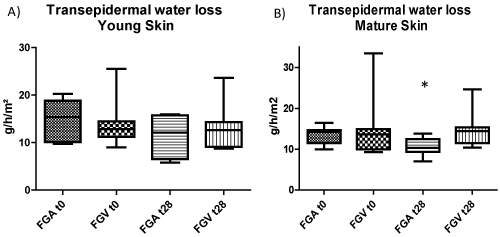 |
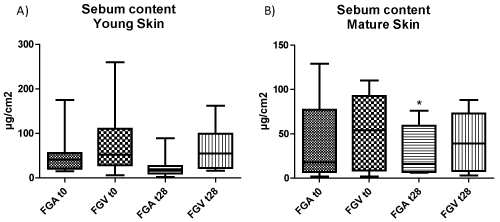 |
 |
| Figure 1 | Figure 2 | Figure 3 |
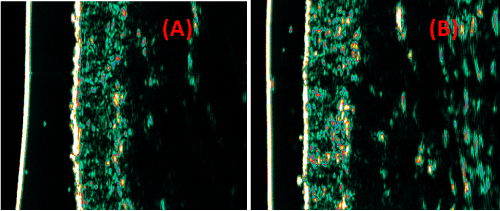 |
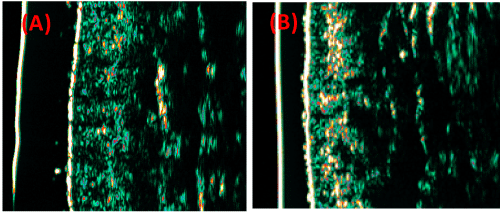 |
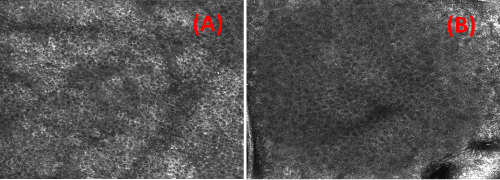 |
| Figure 4 | Figure 5 | Figure 6 |
Relevant Topics
- Applied Biopharmaceutics
- Biomarker Discovery
- Biopharmaceuticals Manufacturing and Industry
- Biopharmaceuticals Process Validation
- Biopharmaceutics and Drug Disposition
- Clinical Drug Trials
- Clinical Pharmacists
- Clinical Pharmacology
- Clinical Research Studies
- Clinical Trials Databases
- DMPK (Drug Metabolism and Pharmacokinetics)
- Medical Trails/ Drug Medical Trails
- Methods in Clinical Pharmacology
- Pharmacoeconomics
- Pharmacogenomics
- Pharmacokinetic-Pharmacodynamic (PK-PD) Modeling
- Precision Medicine
- Preclinical safety evaluation of biopharmaceuticals
- Psychopharmacology
Recommended Journals
Article Tools
Article Usage
- Total views: 20208
- [From(publication date):
November-2015 - Jul 14, 2025] - Breakdown by view type
- HTML page views : 15219
- PDF downloads : 4989
